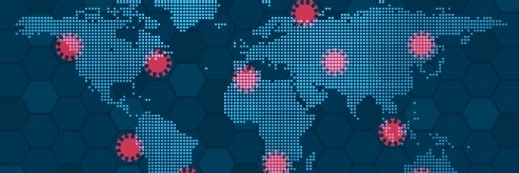
Getty Images
Using Genomic Data to Boost Population Health During COVID-19
Genomic data could benefit population health efforts during the COVID-19 pandemic, but the US has to overcome several barriers before it can fully leverage this information.
Genomic data has emerged as a comprehensive resource that can help researchers and providers better understand the underlying mechanisms of disease, leading to improved population health.
During the pandemic, the value of genomic data has only increased. As the virus that causes COVID-19 continues to mutate, it’s essential for researchers to understand the fundamental biology of the disease to get ahead of negative outcomes.
Listen to the full podcast to hear more details. And don’t forget to subscribe on iTunes, Spotify, or Google Podcasts.
“Microbes have the ability to evolve and try lots of genetic variations on a theme very quickly,” David Relman, MD, professor of microbiology at Stanford University and member of the standing committee on Emerging Infectious Diseases and 21st Century Threats at the National Academies of Science, Engineering and Medicine, said during a recent episode of Healthcare Strategies.
“When a virus evolves, it potentially changes its properties. And we don't know that for sure until we first are able to observe the new genome sequence at the level of its blueprint, which is what the genome is. We can then test whether our predictions about the properties of this new variant are real or not, and what they might mean.”
In order for the US to keep up with the rapidly changing virus, leaders and researchers will need to come together to develop the tools necessary for enhanced surveillance and prediction.
“First, we have to decide collectively that this is an issue of great importance and priority to our wellbeing. We have to see this infectious agent in a way that informs us as to its possible properties, behavior, evolution, and future trajectory. If we were to do that, then we would say, let’s develop a national strategy for pursuing the genomic surveillance of this or any future infectious agent,” Relman said.
“Second, let's develop a leadership plan for this process. Because in the United States, we have many, many brilliant creative scientists, but they tend to operate on their own. And for this kind of enterprise, you have to be coordinated. You have to be organized and integrated into one holistic system. We would need to allocate the resources to make sure that the strategy can be pursued and that everyone is properly organized and coordinated and informed.”
The country may not yet have the means to genetically sequence infections, but leaders can get there by making sure they’re carrying out the process in the most effective way.
“We need to be doing this as best we know how, which means collecting all the right kinds of data, standardizing it, and sharing it properly. Then, we need to let the public know that what we could learn and predict about this or any future pandemic is the possible future evolutionary path of the infectious agent,” Relman concluded.
“It's immensely important, but we have to start by doing it right.”




